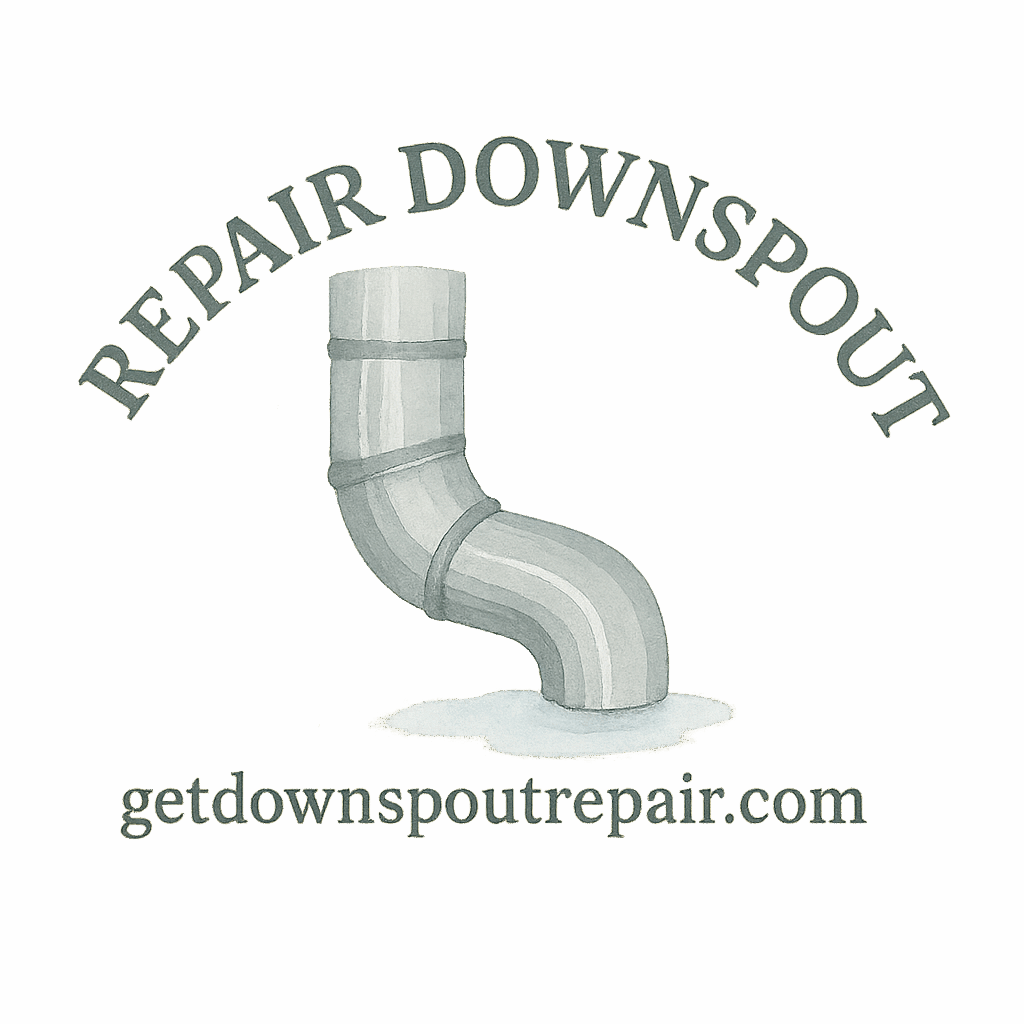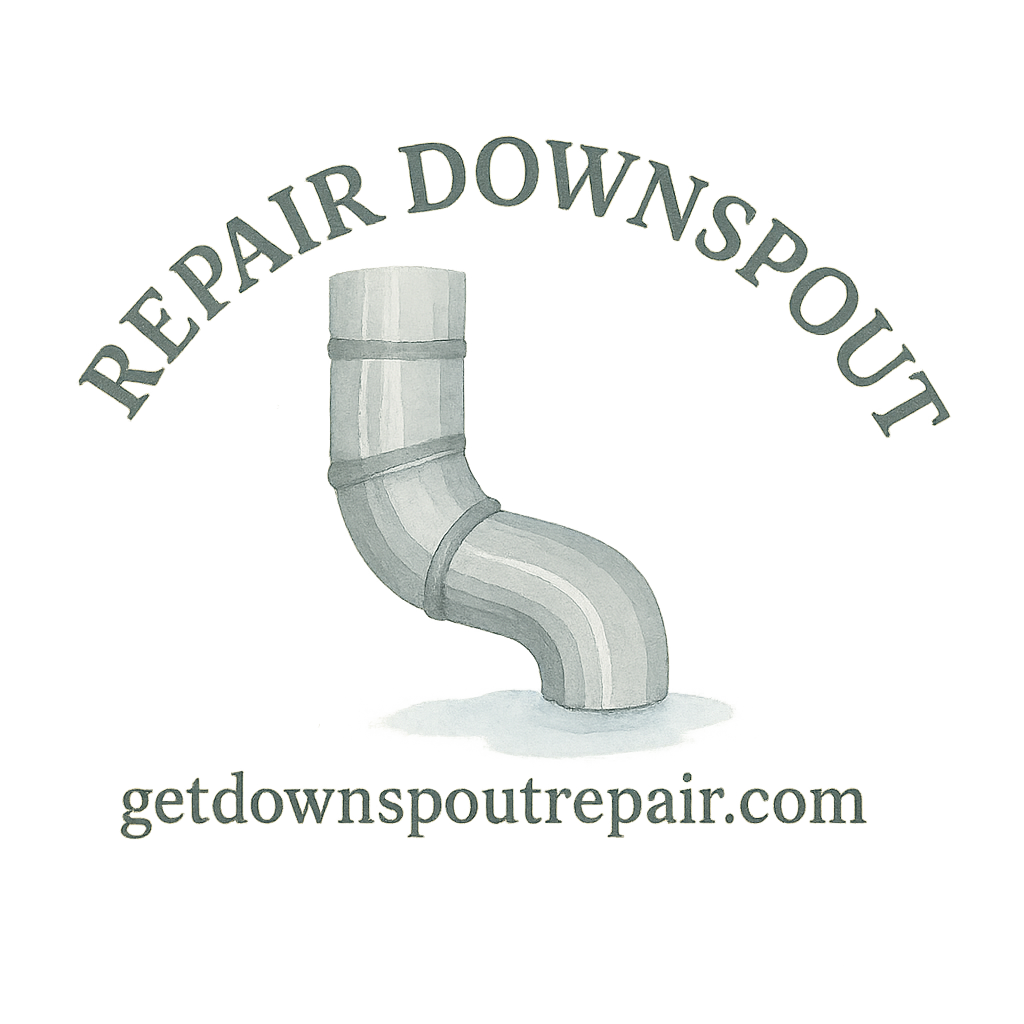Introduction: Why Downspout Repair Matters
If you’ve ever seen rainwater spilling over the edges of your gutters like a mini waterfall, chances are your downspout is to blame. A well-functioning downspout is the backbone of your gutter system—it channels rainwater safely away from your home’s foundation, walls, and landscaping. Without proper repair and maintenance, you risk water damage, foundation cracks, and even basement flooding.
That’s why today we’re diving deep into 9 DIY downspout repair techniques for metal gutters. Whether you’re a beginner at downspout repair or already handy with tools, this guide will walk you through practical, step-by-step fixes that save time, money, and headaches.
Understanding Metal Gutters and Downspouts
How Metal Gutters Differ from Vinyl or Plastic
Metal gutters—aluminum, galvanized steel, or copper—are strong, durable, and long-lasting compared to vinyl or plastic. But they also come with unique challenges: rust, seam leaks, and denting. Unlike vinyl, metal doesn’t crack easily in cold weather, but if neglected, it can corrode and fail.
Common Downspout Problems in Metal Gutters
Some of the most frequent issues homeowners face include:
- Clogs from leaves, twigs, and dirt
- Rust holes or cracks
- Loose brackets and hangers
- Leaky seams and joints
- Poor alignment leading to pooling near the foundation
Recognizing these early prevents major downspout problems later on.
Tools and Materials You’ll Need
Essential DIY Tools
Before tackling any repair, gather your tools. Here’s a quick checklist:
- Screwdriver or drill
- Tin snips (for cutting metal)
- Caulking gun
- Metal sealant or epoxy
- Ladder (stable and tall enough)
- Garden hose
- Wire brush
You can check out some helpful DIY tools guides if you’re just starting.
Safety Gear and Preparation
Never underestimate safety. Gloves, safety glasses, and non-slip shoes are a must. Always position your ladder on a stable surface and avoid working in bad weather.
Technique 1: Clearing a Clogged Downspout
Signs of a Clogged Downspout
- Water overflowing from the top of the gutter
- Little or no water coming out of the bottom of the downspout
- Strange gurgling noises when it rains
Step-by-Step Clearing Process
- Detach the bottom elbow.
- Insert a plumber’s snake or garden hose.
- Flush debris out with water pressure.
- Reattach and test by running water through.
For stubborn blockages, explore more ways to prevent clogging and protect your drainage system.
Technique 2: Repairing Small Holes and Cracks
Using Sealant or Epoxy
A metal sealant or gutter-specific epoxy works wonders for small holes. Clean the area, dry it thoroughly, and apply the sealant evenly. For bigger patches, use a piece of sheet metal cut to size.
When to Replace Instead of Repair
If the hole is larger than a quarter or rust has spread, it’s smarter to replace that section. Otherwise, you’re just putting a band-aid on a bigger issue.
Technique 3: Reattaching Loose Downspouts
Checking Mounting Brackets
Loose downspouts often come from worn-out brackets. Inspect all straps and fasteners along the wall.
Reinforcing with Screws and Hangers
Swap old nails with galvanized screws—they hold better and resist rust. Adding extra hangers also strengthens the downspout’s grip against the wall.
Technique 4: Fixing Leaky Seams
Applying Seam Tape or Caulking
Leaky seams are common in sectional metal gutters. The fix? Clean the joint, apply gutter seam tape, and then seal with caulking for extra waterproofing.
This prevents the dreaded slow drip that can cause water damage to your siding.

Technique 5: Replacing Damaged Elbows
How to Measure and Cut Replacements
Elbows guide water direction—if they’re bent or crushed, replacement is easy. Remove screws, measure the angle, and cut a new piece with tin snips. Reattach with sheet metal screws and seal the joints.
Technique 6: Adjusting Downspout Alignment
Improving Drainage with Extensions
Sometimes water still pools near your foundation, even with a working downspout. The solution is simple: add a downspout extension or flexible drainpipe to carry water farther away.
For long-term solutions, check out drainage protection methods.
Technique 7: Painting and Rust Protection
Removing Rust Before Painting
Metal gutters need rust-proofing. Use a wire brush or sandpaper to remove rust spots, then apply a rust-inhibiting primer followed by exterior-grade paint.
This not only protects your gutters but also boosts curb appeal.
Technique 8: Installing a Splash Block or Drainage Protector
Why Drainage Protection Is Essential
Splash blocks and drainage protectors prevent soil erosion and foundation damage. They’re inexpensive, easy to install, and add an extra layer of safety for your home.
Learn more about smart drainage protection strategies to extend gutter life.
Technique 9: Seasonal Maintenance for Metal Gutters
Preparing for Heavy Rain and Winter
Seasonal upkeep keeps your gutter system in top shape:
- Clean out leaves before fall rains.
- Check for ice buildup in winter.
- Tighten brackets after storms.
A little proactive work saves costly repairs.
When DIY Isn’t Enough: Call a Pro
Benefits of Professional Downspout Repair
Sometimes DIY fixes aren’t enough, especially for major damage or complex systems. Professionals have the premium tools, experience, and guarantees that ensure lasting results.
How to Choose a Licensed Contractor
Look for licensed contractors with reviews, insurance, and warranties. Always compare costs to balance your budget.
Budget Tips for Downspout Repairs
DIY vs. Professional Costs
Doing it yourself saves money upfront, but professionals may be more cost-effective long-term if repairs keep piling up. For cost comparisons, visit downspout repair costs and materials.
Conclusion
Repairing metal gutter downspouts doesn’t have to be overwhelming. With these 9 DIY downspout repair techniques, you can handle clogs, leaks, rust, and alignment issues without calling in a pro every time. Remember, small maintenance steps prevent big disasters. But if the job looks too complex, don’t hesitate to bring in expert help.
Your home’s foundation, landscaping, and siding will thank you for keeping your gutter system in top shape.
FAQs
1. How often should I inspect my metal downspouts?
At least twice a year—once in spring and once before fall.
2. Can I use regular paint on gutters?
No, use exterior-grade paint with rust protection for durability.
3. What’s the quickest fix for a leaking seam?
Apply gutter seam tape followed by a bead of caulking.
4. How far should downspouts extend from the foundation?
At least 4–6 feet to prevent water pooling near your home.
5. Are splash blocks really necessary?
Yes, they protect your foundation from erosion and water damage.
6. Can I repair rusted metal gutters myself?
Yes, for small rust spots. Severe rust often requires replacement.
7. When should I call a professional for downspout repair?
If you see widespread rust, structural damage, or repeated clogs that DIY fixes don’t solve.


